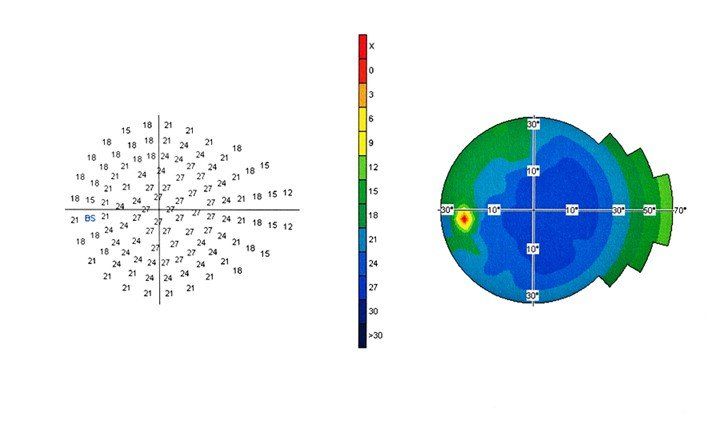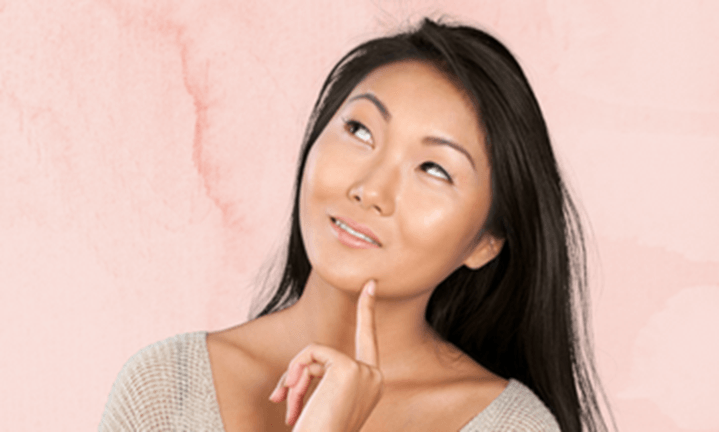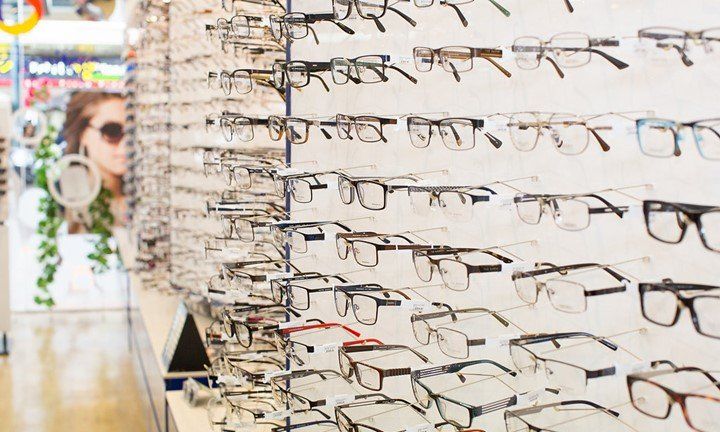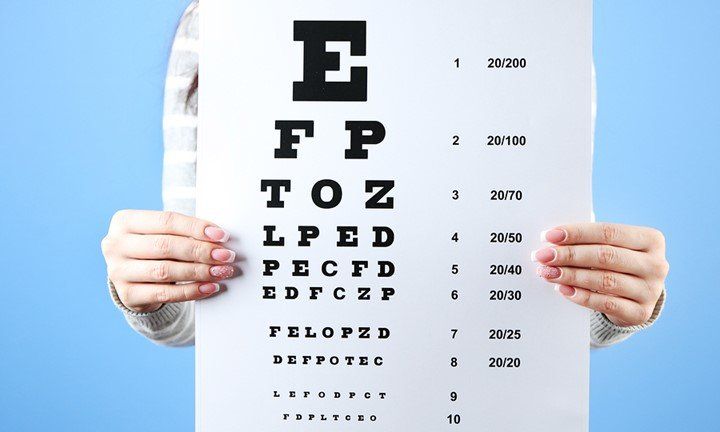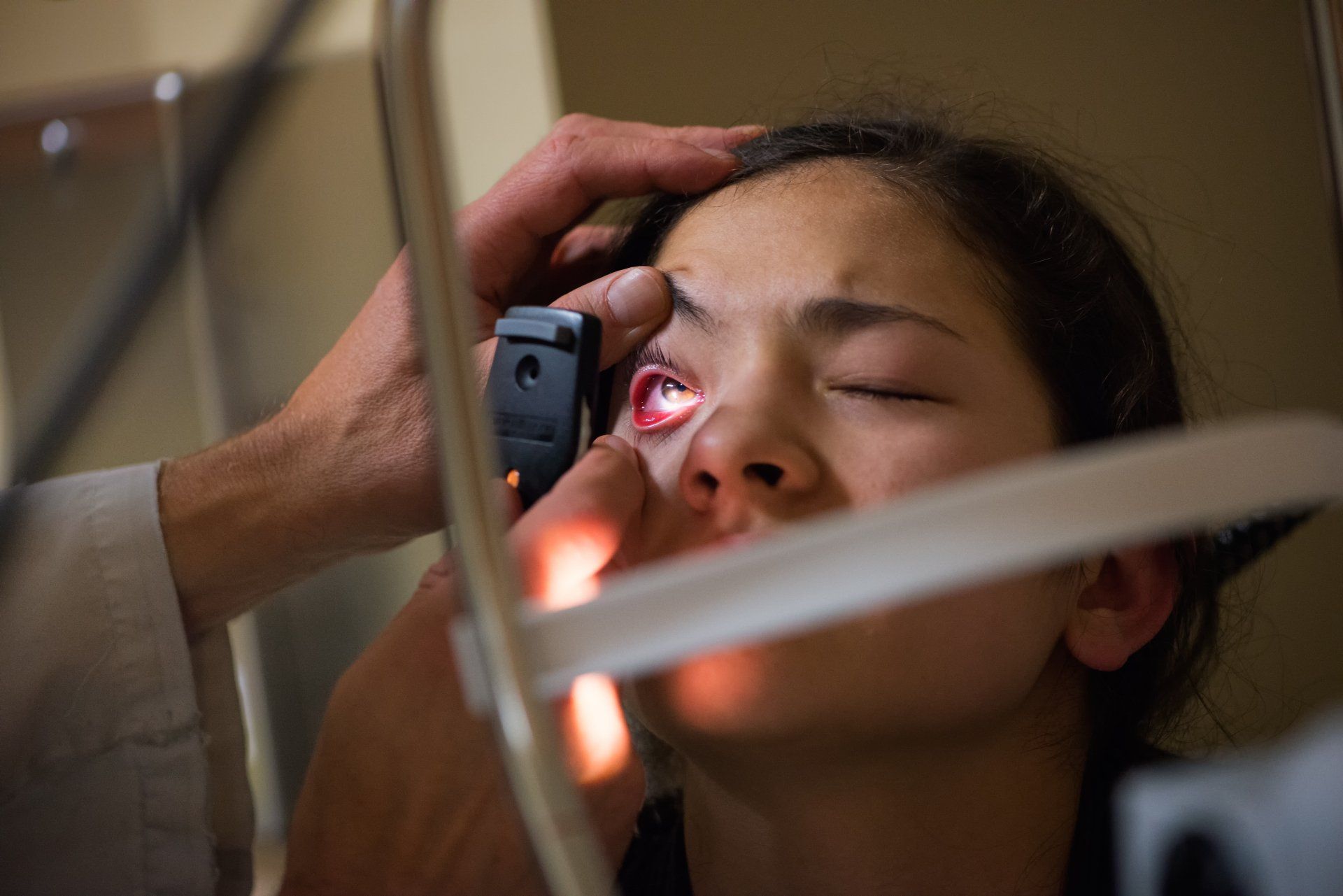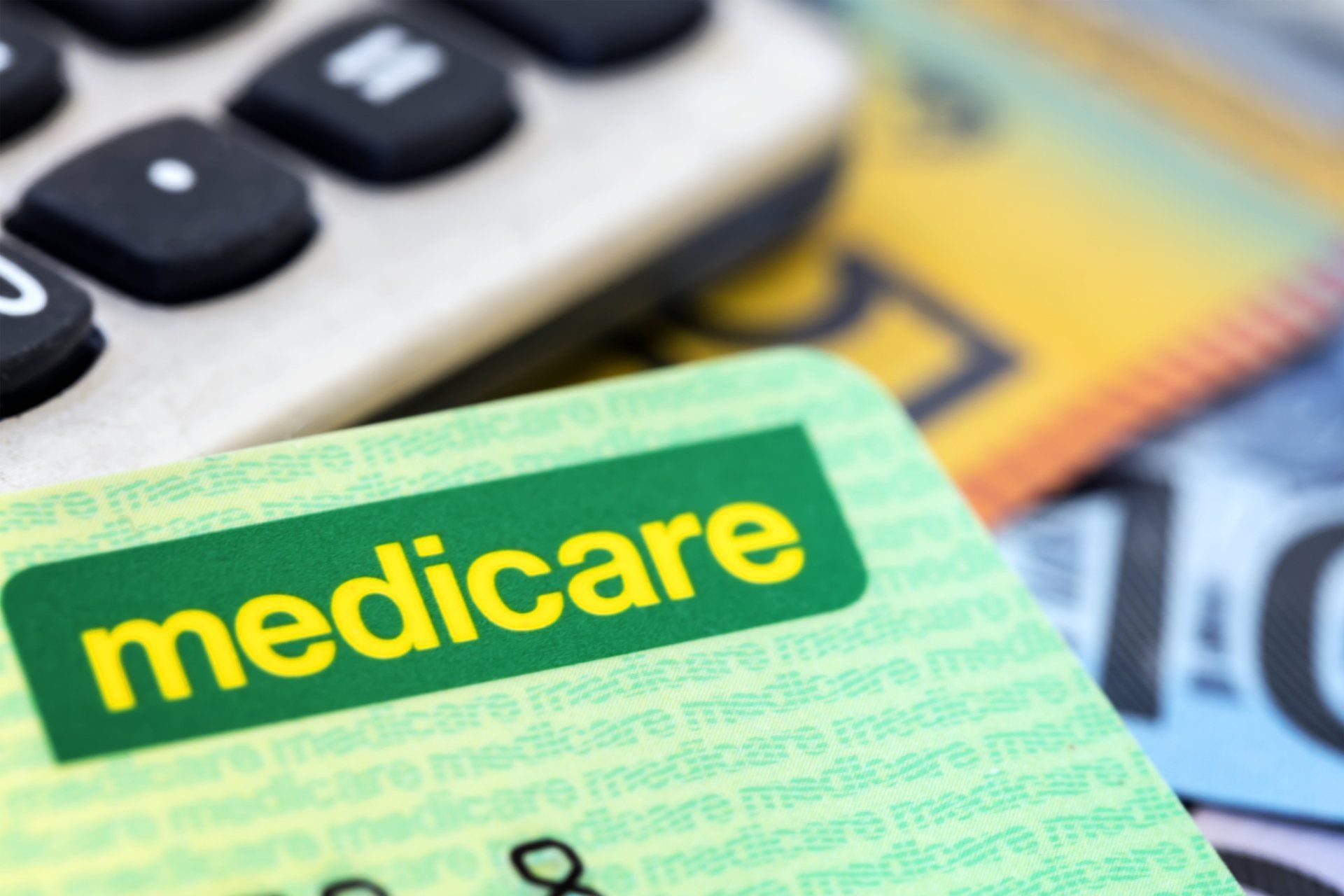Your Eye Test Explained
An eye examination is not just for those who wear glasses or contact lenses, it is for everyone and we recommend that you have an eye test every one to two years for those with good eye sight and more frequent for those of you that don't. A general eye examination can help detect problems so that treatment can get started immediately. Incredibly, many people are unaware that other health problems like diabetes can show up in the eye before the body is affected or other symptoms begin.
If you are a spectacle or contact lens wearer, a regular eye check every 12 months is necessary to monitor the health of the eye and discuss any changes you may be experiencing with one of our friendly team. Additionally, if you do not wear glasses or contact lenses and are noticing changes, an eye examination will determine any eye strain that you may be experiencing, and our Optometrists can provide solutions to alleviate any of your symptoms.
Our team of Optometrists Scott and Alfred are on site in our upstairs Optometrist office. Please phone our office so that we can book an appointment and ensure there is enough time for a proper examination. If you don't have an appointment you are welcome to contact us and we will endeavour to fit you in. Alternatively, you can book your appointment through our online appointment form by clicking here.
There are many different tests that can be performed at an Optometrist. At The Optical Shop in Campbelltown we examine all parts of your vision and eye health. A full eye examination includes:
- A thorough case history
- Internal and external eye examination through retinal photography
- A test of how clearly you see
- How well your eyes work together as a team
- How well you see colour
- A debrief about your eye health and next steps
As part of the eye examination these are some of the tests that we may perform:
Eye test
This test measures how clearly you see. Our Optometrist will ask you to identify different letters of the alphabet printed on a chart called the Snellen chart. The lines of type get smaller as you move down the chart. Each eye is tested separately to check both eyes individually. Your near vision also may be tested, using a card with letters similar to the distant eye chart that is held at reading distance.
Eye muscle test
This test examines the muscles that control eye movement and looks for weakness, poor control or poor coordination. As part of this test, our Optometrist will watch your eye movement as you follow a moving green light with your eyes. This is included in a basic eye examination.
Refraction assessment
Light waves bend as they pass through your cornea and lens. If light rays don't focus perfectly on the back of your eye, you may have a "refractive error." Having refractive error may mean you need some form of correction, such as glasses, contact lenses or refractive surgery. Assessment of your refractive error (or refraction) helps your Optometrist determine a lens prescription that will give you the sharpest, most comfortable vision. Refraction assessment may also determine that you don't need corrective lenses after all.
Depending on your eyes we may use a computerised refractor to measure the curve of the surface of your eyes and estimate your prescription for glasses or contact lenses. Alternatively, we may use a technique called retinoscopy. In this procedure, our Optometrist will shine a light into your eye and measure the refractive error by evaluating the movement of the light reflected by your retina back through your pupil.
From here we usually fine-tune this refraction assessment by having you look through a mask-like device that contains wheels of different powers of lenses called a Phoropter. You'll be asked to judge which combination of lenses gives you the sharpest vision. By repeating this step several times, your Optometrist finds the lenses that give you the sharpest visual for your eyes.
Visual field test (perimetry)
The visual fields test measures the full extent of what you can see to the side without moving your eyes, or what is also called your peripheral vision. The visual fields test determines whether you have difficulty seeing in any areas of your overall field of vision. There are different types of visual field tests:
- Confrontation visual field exam. Your Optometrist sits directly in front of you and asks you to cover one eye. You look directly at your them, while he or she moves his or her hand in and out of your visual field. You tell them when you can see his or her hand or fingers and how many fingers you see.
- Tangent screen exam. You sit a short distance from a screen and focus on a target at its centre. You tell your optometrist when you can see an object move into your peripheral vision and when it disappears.
- Automated perimetry. Your Optometrist uses a computer program that flashes small lights as you look into a special instrument. You press a button when you see the lights.
Using your responses to one or more of these tests, your optician determines the fullness of your field of vision. If you aren't able to see in certain areas, noting the pattern of your visual field loss may help your Optometrist diagnose your eye condition.
Colour vision test
You could have poor colour vision and not even know. If you have difficulty distinguishing certain colours, we can screen your vision for a colour deficiency. To do this, we show you several multi-coloured dot-pattern tests. If you have no colour deficiency, you'll be able to pick out numbers and shapes from within the dot patterns. However, if you do have a colour deficiency, you'll find it difficult to see certain patterns within the dots.
Retinal examination
A retinal examination — sometimes called Ophthalmoscopy or Funduscopy — allows us at The Optical Shop to evaluate the back of your eye, including your retina, optic disk and the underlying layer of blood vessels that nourish the retina (choroid). Usually (If required but not routine) before we can see these structures, your pupils must be dilated with eye drops that keep the pupil from getting smaller when you optician shines light into the eye. After administering eye drops and giving them time to work, your optician may use one or more of these techniques to view the back of your eye:
- Direct examination. Your optician uses an Ophthalmoscope to shine a beam of light through your pupil and to see the back of your eye. Sometimes eye drops aren't necessary to dilate your eyes before this exam.
- Indirect examination (indirect ophthalmoscopy). During this exam, you might lie down, recline in a chair or sit up. Your optician examines the inside of the eye with the aid of a condensing lens and a bright light mounted on his or her forehead — a bit like a miner's lamp. This exam lets us see the retina and other structures inside your eye in great detail and in three dimensions.
- Slit-lamp exam. A slit lamp is a microscope that magnifies and illuminates the front of your eye with an intense line of light. At The Optical Shop we use this light to examine the eyelids, lashes, cornea, iris, lens and fluid chamber between your cornea and iris.
- When examining your cornea, your optical technician may use a dye, most commonly fluorescein (flooh-RES-een), to colour the film of tears over your eye and see any damaged cells on the front of your eye. Your tears wash the dye from the surface of your eye fairly quickly, and doesn’t hurt or effect your eyes in anyway.
- In the case of dilation, a full retinal evaluation is required and usually takes less than 10 minutes. It may take several hours for the effects of the dilating drops to wear off. Your vision will likely be blurry and you may have trouble focusing on near objects. If light bothers you, you may need to wear dark glasses (or sunglasses) for a short time. You may be uncomfortable driving with dilated pupils, so make sure you have transportation after your exam. Depending on what you need to see at work, you might need to wear reading glasses or remove glasses that correct for near-sightedness until the effects of the eye drops wear off.
Screening for Glaucoma
This test measures your intraocular pressure (tonometry) — the fluid pressure inside your eyes. It helps your optician detect Glaucoma, a disease that damages the optic nerve. However, eye pressure measurement is just one thing your Optometrist considers when determining your risk of Glaucoma. It's possible to have higher than average eye pressure and not have Glaucoma or to have Glaucoma if you have normal eye pressure. We also carefully evaluate your optic nerve for signs of damage. This process is included in a basic eye examination.
Methods we may use to measure intraocular pressure include:
- Applanation tonometry. This test measures the amount of force needed to temporarily flatten a part of your cornea. Fluorescein, the same dye used in a regular slit-lamp exam, is usually put in your eye to make your eye easier to see. You'll also receive eye drops containing an anaesthetic. Using the slit lamp, we move the tonometer to touch the cornea and determine the eye pressure. Because your eye is numbed from the eye drops, you won't feel anything.
- Noncontact tonometry. This method uses a puff of air or small probe to estimate the pressure in your eye. No instruments will touch your eye, so you won't need any anaesthetic eye drops. You'll feel a momentary pulse of air on your eye, which can be a surprising and is a strange sensation but does not irritate by any means.
If your eye pressure is higher than average or your optic nerve looks unusual, your optician may use Pachymetry. This test uses sound waves to measure the thickness of your cornea. The most common way of measuring corneal thickness is to put an anaesthetic drop in your eye, then place a small probe in contact with the front surface of the eye. The measurement takes seconds and because your eye is numbed from the eye drops, you won’t feel anything.
You may need more-specialised tests depending on your age, medical history and risk of developing eye disease. If this is the case, your Optometrist will discuss these options with you during your appointment.
What if we find a vision problem
If we detect any problems, we may recommend glasses, contact lenses, eye exercises, prescription eye drops, or other types of visual assessment or even referral for eye surgery. Either way, we are committed to your optimum health when it comes to your eye care. So whether you have had an eye exam a month ago or a year ago, come into The Optical Shop in Campbelltown for your next eye examination we would love the opportunity to take care of your eyes.
